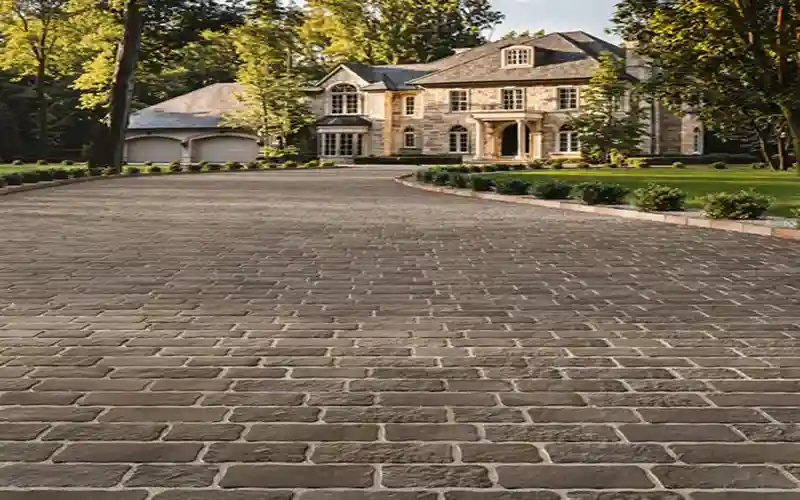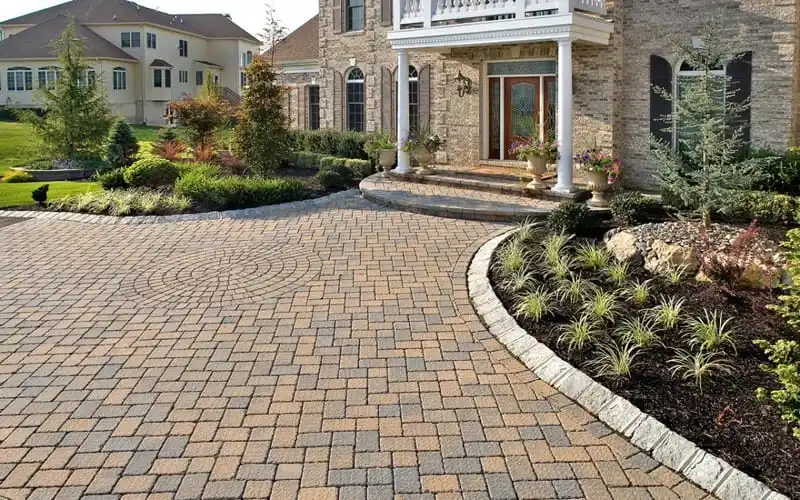Driveway Design Matters
Your driveway is more than just a place to park—it’s the first thing people see when they arrive at your home. With the right driveway design, you can boost curb appeal, add property value, and create a welcoming entrance that reflects your style. Whether you’re building a new driveway or upgrading an existing one, this guide will help you explore design options, materials, and installation tips to make the most of your investment. Driveway design matters more than you might think when it comes to creating a lasting first impression.
Why Driveway Design Matters
A well-designed driveway does more than serve a functional purpose; it enhances the overall look and feel of your home. When driveway design matters, it can increase property value, improve functionality, and stand up to daily wear. A good driveway design balances several factors:
Aesthetics – The design of your driveway should complement your home’s architecture and landscaping.
Durability – A well-planned driveway can withstand the elements, heavy traffic, and the test of time.
Functionality – The layout of your driveway should ensure smooth access to your home, with appropriate drainage to prevent flooding.
Low Maintenance – Choose materials that are easy to clean, repair, and maintain, reducing the long-term cost.
Driveway design matters not just for its visual appeal, but for the overall functionality and durability of your driveway, making it a crucial part of any home improvement project.
Top Driveway Installation Design Ideas

When it comes to driveway design, there are a variety of styles to suit your needs and preferences. Here are some of the top design ideas to consider:
Modern Minimalist Driveway
A modern minimalist driveway is characterized by clean lines, geometric patterns, and smooth surfaces that give your property a sleek, contemporary look.
- Materials: Polished concrete, pavers, or exposed aggregate are ideal for creating a modern design that’s both stylish and functional.
- Why it Works: This design is perfect for homes with modern architecture and can add an elegant touch to your curb appeal.
Rustic or Natural Look
If you prefer a more organic design, a rustic driveway may be a good choice. This style incorporates natural elements, with organic shapes and earthy tones blending seamlessly with the surroundings.
- Materials: Gravel, cobblestone, or natural stone are excellent choices to achieve a rustic look.
- Why it Works: A natural driveway design complements homes in rural settings or those with gardens, blending the structure with nature.
Classic Brick or Herringbone Pattern
For a timeless, elegant design, consider a classic brick or herringbone pattern. This design creates a bold, distinctive look that never goes out of style.
- Materials: Clay bricks or concrete pavers work well for creating intricate patterns that add character and charm to your driveway.
- Why it Works: This design suits traditional homes and can enhance curb appeal by adding structure and visual interest.
Key Steps for a Successful Driveway Installation
The installation of a driveway is a significant investment. Here’s a step-by-step guide to ensure that your new driveway is durable, functional, and aesthetically pleasing.
Plan Your Design
Before you start, sketch the layout of your driveway. Consider the width, length, curves, and parking needs. Think about how your driveway will integrate with walkways, garage access, and landscaping to ensure it fits perfectly with the overall aesthetic of your property.
Check Permits and Drainage
Ensure that you have all the necessary permits to install your driveway. It’s also crucial to plan for proper drainage. Poor drainage can cause water to pool on your driveway, leading to damage over time. Make sure the design allows for proper runoff to avoid future issues.
Excavation and Base Prep
Before laying your chosen materials, prepare the base. This involves removing grass, soil, and debris, then compacting gravel or sand to create a stable foundation. The foundation ensures that your driveway can withstand weight and weather conditions over time.
Material Installation
Once the base is prepared, it’s time to lay the surface. Whether you’re using concrete, asphalt, gravel, or pavers, follow the manufacturer’s instructions to ensure proper installation. The material you choose should match the design and durability needs of your driveway.
Finishing Touches
Once your driveway is in place, consider adding finishing touches. Seal the surface to protect it from weather and wear. You can also add decorative borders, plants, or lighting to enhance the look of your driveway and increase safety at night.
Conclusion
When driveway design matters, it goes beyond simply having a place to park. A well-designed driveway improves your home’s curb appeal, boosts property value, and creates a welcoming entrance. By following these design ideas and installation tips, you can ensure that your driveway not only meets your practical needs but also reflects your personal style. Whether you choose a modern, minimalist design or a more rustic look, the right driveway installation can make all the difference in the world.





